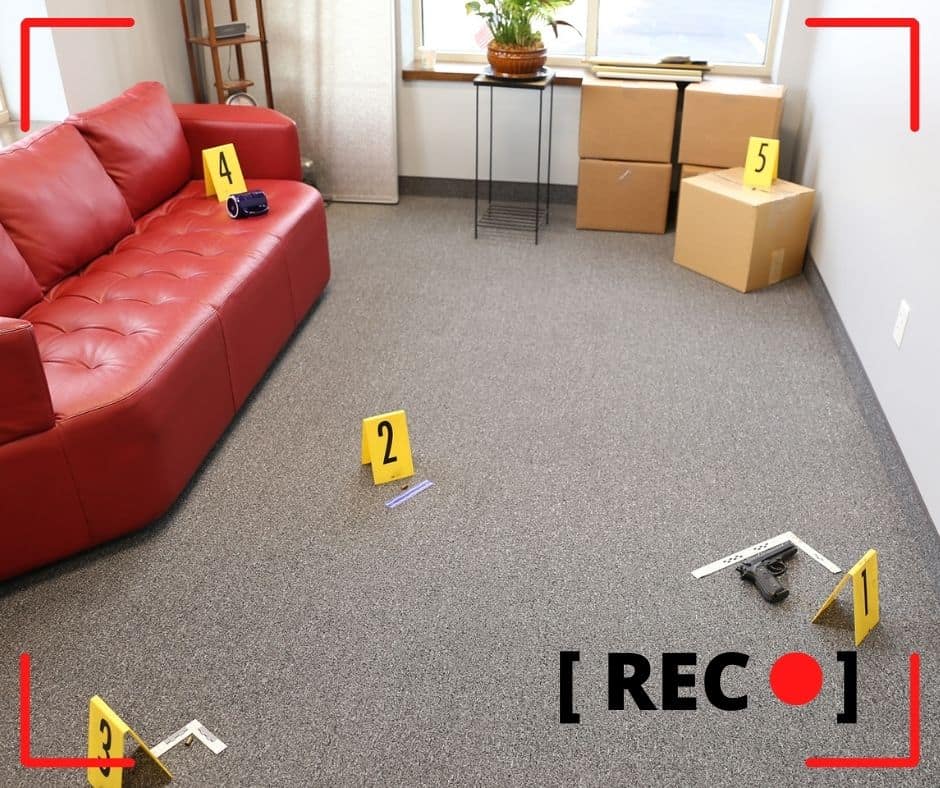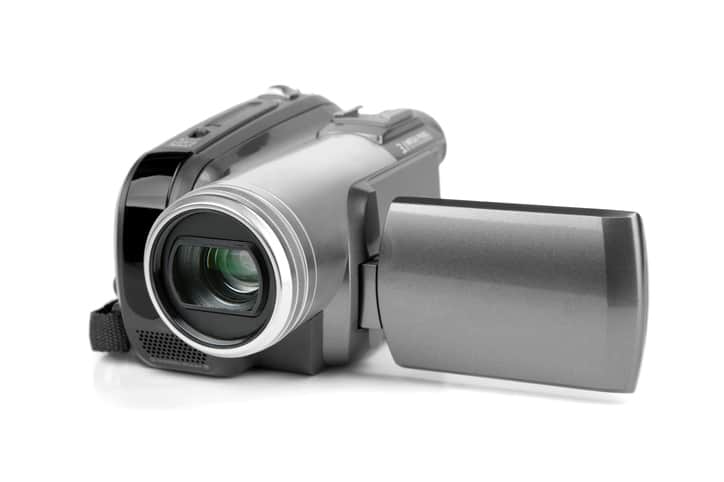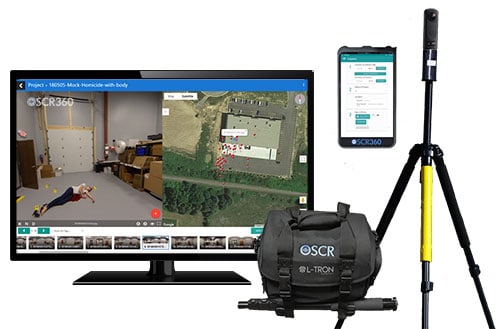
When you are processing a crime scene, it’s important to document how the scene was originally found. While overall photographs, crime scene video and spherical photography can all accomplish this, there are pros and cons to each. At the end of the day, you as an investigator or crime scene technician must have an all-encompassing visual depiction of the scene, and you must be able to speak to where pieces of evidence were discovered.
Historically, videography was considered the ideal solution to achieve an overview of a crime scene. Far superior (and less time consuming) than piecing together individual still photographs, one video could capture it all. However, in more recent years, spherical photography has come into play as a more-than-worthy contender in the contest for best medium for a crime scene walkthrough.
“We’ve all sat through enough crime scene videos to know that you pan too fast, you move around too much, the lighting stinks, it’s constantly refocusing, and so on…Spherical photography is a lot better than video. It’s more impactful and powerful.”
– Retired Sheriff’s Deputy, Andy McNeill
7 reasons spherical photography provides a more impactful walkthrough than using video to record a crime scene
As an experienced crime scene investigator and forensic photography instructor with more than two decades of experience, retired Sheriff’s Deputy Andy McNeill specifies several reasons why he prefers using spherical photography over using video to record a crime scene.
Keeping the goal of providing an easy-to-understand overview of the crime scene in mind, both spherical photography and video can demonstrate the layout of the scene, the locations where evidence was found, and provide context to the viewer. However, spherical photography has more room for error, can be more easily controlled in a courtroom setting and can be more digestible for audiences. Here are 7 key reasons why we prefer spherical photography to using video to record a crime scene.
1. Speed, Direction & Pan
Have you ever watched home video footage and felt motion sick? That is exactly how you don’t want others to feel after watching the crime scene video you shot.

Video footage tends to be bouncy and often pans too quickly to get a clear view of of the scene. If you miss a detail, you have to rewind (and repeat) until you’ve finally found the pivotal piece of evidence you’re looking for. Sometimes, that small detail is hidden and on-screen for 4 seconds of a 10 minute video walkthrough. If the videographer pans too slowly, it takes forever to get through the dull footage.
With spherical photography, your audience experiences the scene at a purposeful and measured pace – with you in control. As the presenter, you can scan the scene and show the audience exactly what they need to see.
2. Zooming Capabilities
Remember, when it comes to a crime scene overview, you’re not trying to capture motion. You’re going through a static scene. Yet with video, the recorder may be tempted to zoom in and out, at their own discretion. Odds are that the video will appear choppier and be even more difficult on the eyes. With spherical photography, the viewer decides when and where to zoom, clearly and easily. Zooming in on a spherical photograph will not result in a loss of resolution or result in undesired pixilation.
3. Point of View
With a video, you are completely limited to the videographer’s point of view. There could be something relevant to view above, below, to the side, or even behind the camera lens that is missed entirely by the recorder. With spherical photography, every detail in every direction, including floor to ceiling, is captured for the viewer to see. The viewer controls the camera direction, deciding what to show and when.
4. Focus & Exposure
Camcorders and DSLR cameras with video capabilities tend to auto-focus throughout the duration of filming, meaning that there is unfocused, blurry lapses in time while the camera attempts to refocus.
As the videographer moves through a crime scene, the lighting changes, causing inconsistent exposure and overall loss in quality. Spherical Photography is a 360-degree “snapshot” of the scene. With HDR (High Dynamic Range) capabilities, 360-imagery is crystal clear. Every detail can bee seen, even with variable lighting conditions. The final images will be in the proper exposure and similar to what you see with your naked eye.
5. Second Glance
With video, it is tedious to rewind, fast-forward or scrub when you want to have another look – especially at the crime scene.
Spherical photography is completely stable. It’s like a high-quality freeze frame. You can move the image slightly to hone in on what you’re looking for or move on to the next image. Spherical photography makes it easy to look at whatever you want to see, again and again.
6. Time
The time it takes to record video footage depends entirely on the videographer’s opinion, skill, perspective, and even mood. Spherical photos are consistent. They take the photographer out of the mix and get the job done within 4-10 seconds, every time. Even a scene with multiple rooms can be completely captured in roughly 10 minutes.
7. Background Noise
Crime scene techs and photographers are taught not to talk when shooting video because anything recorded can be considered “Rosario Material” (any recorded statements) during discovery.
Best practices for using video to record a crime scene dictate that the videographer should list the following at the start of the video:
- Date.
- Time.
- Location.
- Introductory information.
- A brief description of what will be recorded.
Then, it is suggested that the videographer pause the tape and turn off mics. Because the video is considered evidence, if you choose to utilize video as your medium, each scene should have its own recording. The original video file should not be edited after the fact.
But, what if you forget to turn off the audio on your camera? Prior to pressing record, the videographer will instruct everyone to be quiet. At a busy scene, the camera could pick up a background conversation, a cell phone ring, or even an F-bomb. Someone laughing at a joke in the background while you’re recording footage of a dead body? Good luck in court. Any background noise will essentially mean you can’t use the video or you have to reshoot. With spherical photography, sound is a non-issue.
What spherical photography system should I use?
When it comes to spherical photography, the OSCR360 system is our pick. In addition to the fast, high-quality overall photos taken with OSCR’s Capture Kit, OSCR360 includes Presentation Software that compiles all of your digital evidence into one compelling presentation. Take fellow investigators, command staff, district attorneys, witnesses, and the courtroom audience on a virtual walkthrough of the crime scene. View each environment in 360-degrees and click on points of interest for an up-close look at fingerprints, ballistic evidence, surveillance footage, DSLR close-ups and more. Leave no detail unturned and serve justice. OSCR360 has been used at major crime scenes, crash scenes, fire scenes, and in the courtroom.
